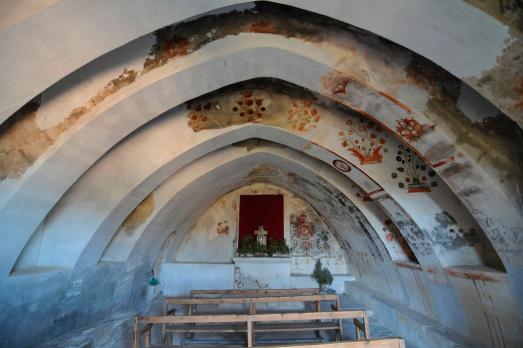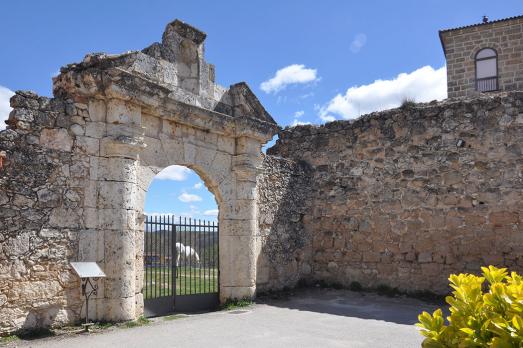
Ruins of Servitano Monastery
, ES
The Visigothic Servitano Monastery was the seat of a diocese between the 6th century and the Islamic occupation. It was located in the town of Arcavica, which no longer exists.
Here you can search for a building to visit. You can use the map find destinations, or you can use the filters to search for a building based upon what different criteria.

, ES
The Visigothic Servitano Monastery was the seat of a diocese between the 6th century and the Islamic occupation. It was located in the town of Arcavica, which no longer exists.

Kirby Bedon, GB
St Mary’s Church ruins are located in Kirby Bedon, a Norfolk village in the south-east of Norwich, just 50 metres or so opposite the current parish Church of St Andrew.

Batea, ES
The chapel of Sant Joan d'Algars was part of a larger complex, the Algars Castle, os which only some walls and a pointed arch have survived.
Voulgaro, GR
The Church of Saint Barbara (Agia Varvara), today is ruins, was possibly the Catholicon of a medieval monastery.

Pastos, GR
The church of the Virgin Mary in Pastos was an important place of worship during the Venetian rule in Crete. It is even possible that it was the seat of a diocese.

, GR
The Monastery of Saint Anthony, located 2 km from Kato Asites, was founded sometime between the 13th and 15th centuries. It was destroyed by the earthquake of 1856. The name of the area where it is located is called Petali, due to the sound made by the loom pedals of the nuns who inhabited the monastery.

Villaviciosa de Tajuña, ES
The monastery of San Blas de Villaviciosa (Villaviciosa de Tajuña) is located in the northeast of Brihuega, the municipality to which it belongs. The foundation of this monastery was preceded by the establishment of an Augustinian canonry, founded by the archbishop of Toledo, Gil de Albornoz, in 1347. It was suppressed with the Spanish confiscation, which meant the loss of its assets and also of a good part of the buildings. Only the portal is and some remains of other buildings are preserved today.

Atienza, ES
The Franciscan convent in Atienza is believed to have been founded around 1264. At the end of the 15th century, the house passed to the Observant Franciscans, who remained there until the War of Independence, when the convent was badly damaged and abandoned by the friars.Today only the Gothic apse of the church, from the end of the 14th century, remains.

Pinilla de Jadraque, ES
In 1218, Rodrigo Fernández and his wife, wealthy people from Atienza, founded a female Cistercian monastery in this place, which they named after San Salvador. In the future, this monastery would benefit from more goods and privileges from individuals and also from kings. he monastery continued its activity in this place until 1576, when, following the provisions of the Council of Trent, a more suitable place for the community was sought, and it was moved to the new convent of the Conception of Almonacid de Zorita, which was also abandoned in 1623.

Methoni, GR
The Monastery of Santa Maria de Verge in Methoni was founded by Cistercians nuns outside the city castle. It provided medical care to those in need.

new
Nestled amidst the serene landscapes of the Harz region, lies a hidden gem for nature enthusiasts and history buffs alike - the Harz Monastery Hiking Trail. Lace up your hiking boots and embark on this captivating adventure that will transport you back in time.

The Holy Mile (Miglio Sacro) of Naples is a one-mile-long itinerary, through sacred places linked to the city's patron saint, San Gennaro, in the Rione Sanità district. Discover the city from a new perspective with this unique walking tour.

As a university city, cultural offerings abound in Tartu and will reach their peak after being designated one of three European Capitals of Culture for 2024. In this list, we've compiled the most interesting sacred places to visit in and around the old town.